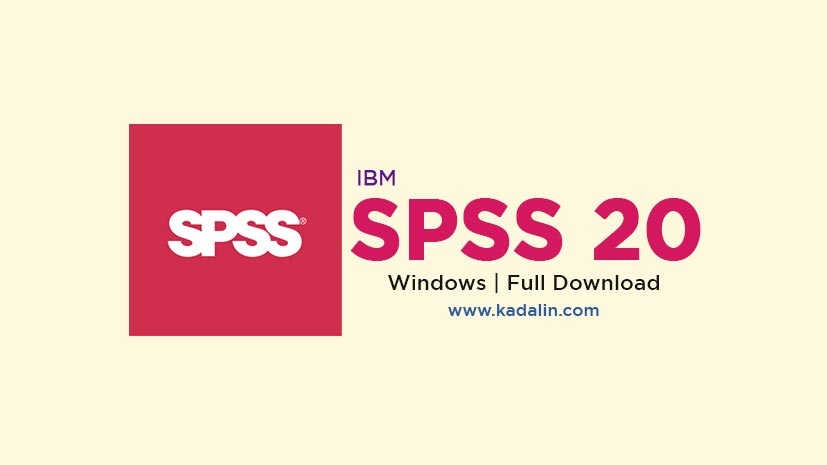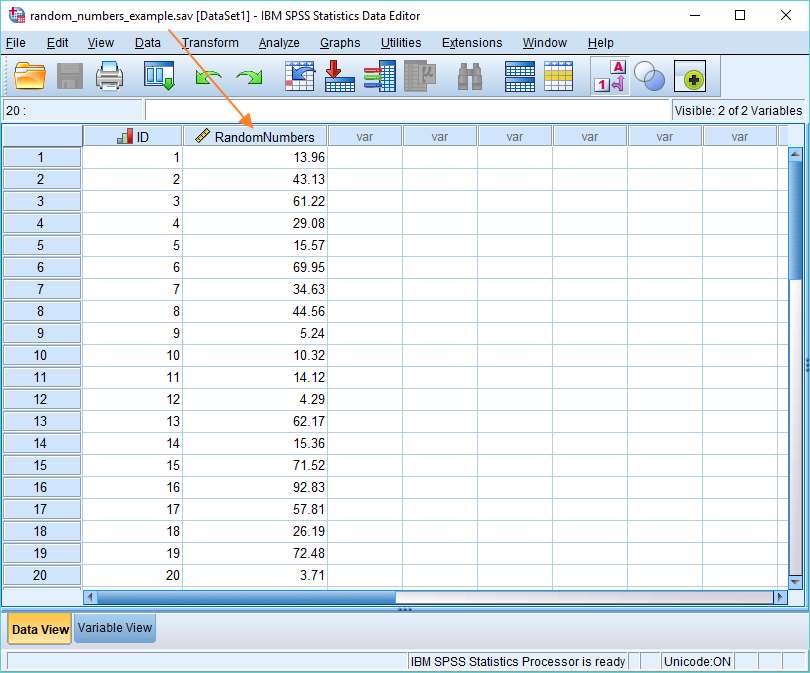
- #Ibm spss 20 code install#
- #Ibm spss 20 code portable#
- #Ibm spss 20 code code#
- #Ibm spss 20 code download#
During the installation process, the plug-in looks for a folder that contains the correct version of R.
#Ibm spss 20 code install#
If you install 2.14.1 or 2.14.2, it will not work. For SPSS version 21, for example, you must install R-2.14.0. For SPSS version 21, use R-2.14.0.īe warned that the R integration plug-in is specific about the R version. However, for SPSS version 22, use R-2.15.
#Ibm spss 20 code download#
Unfortunately, the download page does not specify. Which version of R you need depends on the version of SPSS you are running. It’s free.Īnother hurdle in the installation is that the plug-in works with only one version of R, not necessarily the current one. You need to register with IBM Developer, if you are not already.

For one thing, you must start several pages before the actual download page. Installing the plug-in is fairly straightforward, but the process does contain a few hurdles. Through this plug-in, you can supply R functions to SPSS users who are unfamiliar with R. Writing extensions goes beyond the scope of this article, but they are an important reason to learn to use the R plug-in. You can implement a function in R with no knowledge of R programming. In particular, R functions can be bundled as extensions and supplied to you through the menu. SPSS allows you to create more menu items and add them to the existing menu bar. With the R plug-in, you retain all the features of an SPSS database, particularly the labels of category data and the long descriptors. R gives the SPSS user more tools for the job, and although you might implement these tools outside of SPSS by exporting the data, data export is never seamless. Briefly, most advances in statistics appear first as R packages before they are added to the drop-down menus. In a previous article, I argued that data analysts should learn R.


#Ibm spss 20 code code#
You can run SPSS and R code from the same SPSS syntax file and apply it to the same database. If R is to play a role in the analysis, either as an assist in recoding variables or to supply a function not currently available in SPSS, maintaining both SPSS and R syntax in the same syntax file has value. With SPSS, you can maintain a record of every procedure that is run on the data, be it a transformation of the data, the creation of new variables, or an analysis. Months later, if you need to return to the problem with additional data or a new analysis, it is possible to rebuild the original project. Given the original data file and the syntax file, it is possible to re-create every step of the analysis from these two files. Reproducible research is mainly an organizational principle. Where R and SPSS are both used on the same data, use of the R integration plug-in fosters reproducible research. Using R from SPSS allows you to apply R functions to SPSS data while you maintain the integrity of the original database.Ī further advantage to using the R integration plug-in. When you use R from SPSS, you can apply R functions to SPSS data while you maintain the integrity of the original database. Translating from one data format to another is always tricky and time consuming. Is the effort of learning the plug-in worth the gain in productivity? Is there a gain in productivity, or are the advantages of a different sort? To these questions, I would answer Yes and Yes. Tedious data manipulation notwithstanding, you can certainly work both applications without a plug-in to connect them. If you need to return data from R back to SPSS, the return journey is more awkward. This method usually works, in the sense that only a few dozen lines of R code are then required to cope with categories, missing values, time variables, and other features that are either lost or damaged in translation.
#Ibm spss 20 code portable#
A cleaner way is to save to SPSS Statistics Portable (POR) format from SPSS and open the result by using the read.spss() method from the foreign library. sav format typically opens the file in SPSS, saves it to comma-separated values (CSV) format, and opens the result in R by using the read.csv() method.

The low level of interest is not surprising: SPSS users are, more often than not, people who use only SPSS for their data analysis and R users are accustomed to applying ugly hacks as part of doing business with R. It’s something of a well-kept secret, judging from the low level of activity in the R blogosphere on this point.


 0 kommentar(er)
0 kommentar(er)
